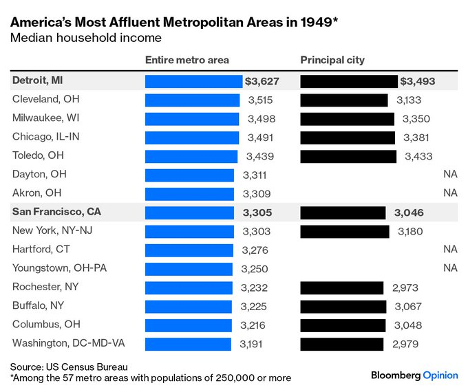
AI Revives the Rust Belt
Posted February 26, 2024
Chris Campbell
Reporting from Prospera, Honduras…
Two months back, I was taking a walk with my girlfriend near where we live.
We rounded a corner and saw a guy -- in his early 30s I’d say -- bowled over puking.
He stood up straight.
Took a few steps.
Then, he started puking again.
Mind you, this was about 5:30 pm. Not exactly party hours.
He noticed us from across the street.
“Don’t do fentanyl guys,” he shouted with a weak wave.
“Don’t plan on it,” I said back. “You good? Need us to call anyone?”
“No,” he said. “I’m good.”
Two days later, a relative saw someone stop outside of her house, get out, and -- again -- start puking.
Different guy.
This was in a relatively upper class neighborhood.
It’s hard to overstate the scale of the problem. Fentanyl has ravaged the Rust Belt. On the back, of course, of the opioid crisis.
How do we fix this?
Sure, it’s a drug problem.
America loses WW1 levels of humans every year to fentanyl (100,000+.)
And the fact that fentanyl is showing up in marijuana, cocaine, and counterfeit pills makes it seem like… perhaps!... killing people is the point.
BUT
Deaths of despair are also on the rise.
Ultimately…
Sebastian Junger diagnosed the problem in his small book Tribe.
I read the entire book at the bookstore in one sitting (and bought the book anyway to read again). He wrote:
“Modern Society has perfected the art of making people not feel necessary. It’s time for that to end.“
And maybe it’s in our power.
The Factory is the Product
Remember the glory days when America dominated global manufacturing?
Most of the richest cities in America in 1949 were within 50 miles of my home -- Detroit, Cleveland, Chicago, Dayton, Akron, and Columbus.
David McCullough’s book “The Wright Brothers” listed Dayton, Ohio, as “the place for inventors and entrepreneurs.”
Hard to imagine when I drive through these places, but it’s true.
They were THE tech hubs of America.
AND, according to Aaron Slodov, CEO of Atomic Industries, you shouldn’t count the Rust Belt out quite yet.
Slodov is one American founder aiming for a Rust Belt revival.
And I, for one, am rooting for him.

Can AI Revive the Rust Belt?
Based in Detroit, Atomic is working to automate and streamline the complex process of tool and die making -- a critical step in producing everything from paper clips to car parts.
By using AI and simulations, Atomic's software designs and tests tool models in hours rather than the months a human would take.
The potential here is massive: faster and cheaper production has the potential to make American manufacturing competitive.
Atomic’s ultimate vision is bold: make mass manufacturing as agile and distributed as software development.
As Slodov puts it, "Pushing the world of atoms towards the same pace as the world of bits is crucial."
The Atomic team envisions a future where tech-charged manufacturers can "spin up factories that could mass produce anything, at a fraction of speed and cost."
I’ll be reaching out to Slodov in the coming days to make a trip up to Detroit. (When I get home, that is.)
As I revealed last week, Atomic Industries is just one small part of the “Deep Tech” movement in America.
It’s a shift from focusing solely on software to bringing hardware back to the fore.
More soon.
